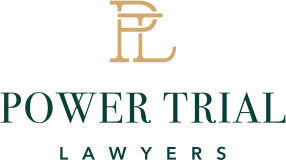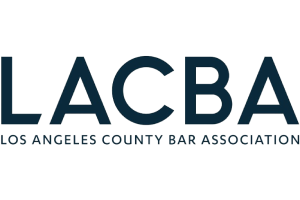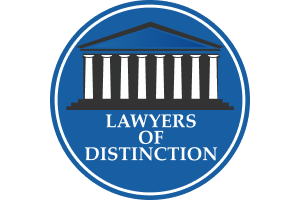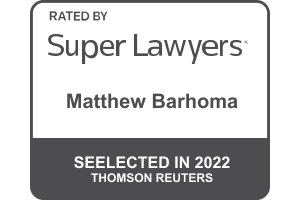- Free Consultation: (888) 808-2179 Tap Here to Call Us
California Criminal Appeals Lawyer
Free confidential consultation with a California Criminal Appeals Lawyer: (888) 808-2179
A criminal conviction is not always the end of a case. In California, appellate law exists to correct legal error, restore fairness, and restrain excess. Yet few defendants—or even trial lawyers—truly understand how appeals work.
This guide provides a comprehensive, authoritative, and client-oriented explanation of the criminal appellate process. It is intended both for individuals seeking relief and for attorneys refining their understanding of appellate strategy.
An appeal is not an act of desperation; it is an act of discipline. Success lies in precision, timing, and persuasive logic. Every step—notice, record, briefing, argument—is governed by rules that must be observed exactly, not approximately.
Appellate courts are not forums of sympathy. They are courts of record and reason, where the question is not what happened, but whether the law was applied correctly when it did.
Immediate help: Call (888) 808-2179 for a free, confidential consult. We serve clients statewide (Los Angeles, Orange, Riverside, San Bernardino, San Diego, Ventura, Santa Barbara, and beyond).
Understanding Criminal Appeals in California
A criminal appeal challenges a conviction or sentence on the grounds that the trial court made a reversible legal or procedural error. The appeal is filed in the California Court of Appeal, not the same court where the trial occurred.
Unlike a trial, an appeal does not involve witnesses, juries, or new evidence. It is fought entirely on the written record—the transcripts, filings, and exhibits already created below. The lawyer’s task is to transform that record into a clear demonstration that error occurred and that the error mattered.
What an Appeal Is Not
- It is not a new trial or retrial.
- It is not a venue to present new evidence or witnesses.
- It does not reconsider credibility or factual disputes unless the evidence was legally insufficient.
What an Appeal Is
- A structured, written argument showing that the lower court departed from the law in a way that affected the outcome.
- A process of legal reasoning, not emotional persuasion.
- A safeguard to ensure justice was administered within the boundaries of constitutional and statutory law.
A criminal appeal, properly conducted, is the highest expression of legal craftsmanship: it fuses deep knowledge of procedure with precise writing and analytical rigor.
The Two Avenues of Post-Conviction Relief
In California, post-conviction litigation unfolds in two distinct but often complementary lanes: the direct appeal and the collateral attack.
Lane 1: The Direct Appeal
The direct appeal is the first and primary vehicle for challenging a conviction. It is confined to the official record—the pleadings, transcripts, exhibits, and rulings that exist in the trial file.
The objective is to expose legal error: misapplied law, improper jury instructions, evidentiary mistakes, prosecutorial misconduct, or sentencing irregularities.
Because it is limited to the record, the direct appeal is governed by strict deadlines and procedural rules. Missing these deadlines usually eliminates the right to appeal.
Lane 2: Collateral or Post-Conviction Relief
The collateral lane encompasses petitions for habeas corpus, resentencing, statutory reforms (such as Penal Code §§ 1172.1, 1172.6, and 1172.75), and constitutional remedies like the Racial Justice Act.
These proceedings may introduce new evidence—declarations, expert opinions, recantations, or scientific developments not available at trial.
While an appeal argues that the trial was conducted wrongly, post-conviction relief argues that the outcome itself cannot stand in light of new facts or new law.
A sophisticated appellate strategy frequently coordinates both lanes: the direct appeal preserves and frames legal error, while post-conviction efforts develop factual or equitable grounds for further relief.
Deadlines That Control the Right to Appeal
Few rules in California law are more absolute than the deadlines for filing a Notice of Appeal. The notice is jurisdictional: once it expires, the appellate court has no power to review the case.
- Misdemeanor convictions: The notice must be filed within 30 days of the judgment or appealable order.
- Felony convictions: The notice must be filed within 60 days of the judgment or appealable order.
No lawyer can safely ignore these dates. The notice of appeal may be a single page, but it is the most important page in the entire process. It triggers the appellate court’s authority and preserves the defendant’s rights.
If the defendant is even near these limits, counsel must file immediately and perfect the record later. Timing determines jurisdiction; hesitation destroys it.
The Nature of Appellate Review
Appellate courts do not decide whether the defendant is guilty. They decide whether the trial was lawful. This evaluation occurs through standards of review—doctrines defining how much deference is given to the trial court’s decisions.
Understanding these standards is the key to crafting a winning appeal.
1. De Novo Review — Pure Questions of Law
When the issue is purely legal—such as constitutional interpretation, statutory meaning, or application of the wrong legal test—the appellate court reviews the matter anew. No deference is given to the trial court.
Example: whether a warrantless search was justified under an exception to the Fourth Amendment.
2. Abuse of Discretion — Judicial Reasonableness
Many trial decisions—sentencing choices, evidentiary rulings, discovery orders—are reviewed for abuse of discretion. The question is not whether the appellate court would have ruled differently, but whether the trial court’s decision was outside the bounds of reason.
A seasoned appellate advocate knows that success under this standard requires showing legal misapplication or arbitrary reasoning, not merely disagreement.
3. Substantial Evidence — The Deferential Lens
Challenges to the sufficiency of the evidence are judged under the substantial-evidence standard. The appellate court views the evidence in the light most favorable to the verdict, asking only whether any rational trier of fact could have reached the same conclusion.
Because of its deference, this is one of the hardest standards for a defense appellant to overcome. It demands not only identification of gaps in proof but demonstration that no reasonable juror could convict even under those favorable assumptions.
4. Harmless-Error Principles — Did the Error Matter?
Even when error is proven, reversal depends on whether that error prejudiced the outcome. Two doctrines dominate this analysis:
- People v. Watson (1956) 46 Cal.2d 818: For most state-law errors, the appellant must show a reasonable probability that the result would have been different.
- Chapman v. California (1967) 386 U.S. 18: For constitutional errors, the burden shifts—the prosecution must prove beyond a reasonable doubt that the error did not affect the verdict.
A powerful brief aligns each issue with the most favorable standard of review available. Great appellate advocacy is not the art of complaint; it is the art of alignment.
The Appellate Record: The Foundation of Every Argument
Every appeal begins and ends with the record—the universe of materials transmitted from the trial court to the Court of Appeal.
It consists primarily of:
- The Clerk’s Transcript: Pleadings, motions, minute orders, exhibits, verdicts, and sentencing documents.
- The Reporter’s Transcript: Verbatim accounts of hearings, trial proceedings, and oral rulings.
- Augmented or Settled Statements: Supplemental materials to correct omissions or reconstruct lost transcripts.
If an error is not in the record, the appellate court cannot consider it. The record is not a formality; it is the evidentiary foundation of appellate argument.
Competent appellate counsel ensures the record is complete, indexed, and certified before briefing begins. A missing motion, a mis-numbered exhibit, or an unreported sidebar can cripple even a meritorious claim.
The Purpose of an Appeal: Precision, Not Passion
At the appellate level, rhetoric yields to logic. Judges read thousands of pages of transcripts and hundreds of briefs each year. The persuasive power of an appeal lies in its clarity, organization, and legal accuracy—not in volume or emotion.
An effective appellate lawyer speaks the language of the court: precedent, principle, and policy. Each argument must fit within a recognized doctrinal framework and identify a specific remedy the court can lawfully grant.
Reversal is never achieved by indignation; it is achieved by doctrinal precision.
Common Grounds for Criminal Appeal
Every appeal begins with a single premise: the trial court committed legal error that mattered. California appellate jurisprudence recognizes several recurring categories where such errors most often arise. Understanding them clarifies both the potential and the limits of appellate review.
1. Evidentiary Error
The trial court’s gatekeeping function is central to fairness. Evidence admitted in violation of the Evidence Code—whether hearsay, character evidence, or prior-bad-acts evidence under Evidence Code § 1101(b)—can poison a verdict.
Likewise, exclusion of key defense evidence, particularly when it bears on motive or credibility, may infringe the constitutional right to present a defense.
A successful evidentiary appeal demonstrates not only that the ruling was wrong, but that the evidence was prejudicial within the meaning of People v. Watson or Chapman v. California.
2. Instructional Error
Jury instructions are the lens through which jurors perceive the law. A single misstatement can alter the verdict. Errors arise when:
- Required pinpoint instructions are omitted;
- Ambiguous or outdated CALCRIM instructions are used; or
- The trial court refuses a properly requested defense instruction.
An appellate lawyer must show that the misinstruction affected the jury’s understanding of an essential element or lowered the prosecution’s burden of proof.
3. Prosecutorial Misconduct
The prosecutor is both advocate and minister of justice. Misconduct includes:
- Misstating evidence or law in closing argument;
- Appealing to passion or prejudice;
- Suppressing exculpatory evidence (Brady v. Maryland violations).
Such misconduct, if uncorrected, can compromise due process and justify reversal.
4. Insufficient Evidence
An appellate challenge to sufficiency is rarely granted, but when successful, it completely bars retrial under double-jeopardy principles. The question is legal, not factual: whether any rational trier of fact could find guilt beyond a reasonable doubt when viewing the evidence in the light most favorable to the judgment.
5. Ineffective Assistance of Counsel
Under Strickland v. Washington (1984) 466 U.S. 668, a conviction may be reversed if counsel’s performance fell below an objective standard of reasonableness and prejudiced the outcome.
While most ineffective-assistance claims belong in habeas corpus (where new evidence can be introduced), certain omissions—failure to object to obvious misconduct or to request mandatory instructions—appear on the record and can be raised on direct appeal.
6. Sentencing Error
California’s sentencing scheme is dynamic. Common appellate issues include:
- Improper upper-term imposition without lawful aggravating findings (People v. Sandoval, 41 Cal.4th 825);
- Failure to apply ameliorative legislation retroactively;
- Miscalculation of custody credits;
- Cumulative sentencing in violation of § 654.
Sentencing error is one of the most fertile grounds for partial reversal or remand.
7. Constitutional Violations
Violations of the Fourth, Fifth, Sixth, or Fourteenth Amendments—unlawful searches, coerced confessions, denial of confrontation, or racial bias—are classic appellate territory. When properly preserved, they receive the Chapman harmless-error test, placing the burden on the State.
Remedies the Court of Appeal May Grant
An appeal’s purpose is not merely to declare error but to obtain remedy. The Court of Appeal possesses several instruments of correction:
- Reversal and Dismissal: When evidence is legally insufficient, the conviction must be reversed outright and cannot be retried.
- Reversal and Remand for New Trial: Ordered when procedural or instructional errors undermined the verdict.
- Vacatur and Resentencing: Appropriate when the conviction stands but the punishment was unlawfully imposed.
- Modification: The court may strike enhancements or correct clerical mistakes directly.
- Affirmance: The default outcome when no reversible error appears.
The appellate advocate must always frame the requested outcome within the court’s lawful power—an argument without a remedy is an academic exercise.
Building the Record for Review
An appellate record is not discovered; it is engineered. Transcripts must be requested promptly, and each volume reviewed for completeness. The clerk’s transcript should contain every pleading, exhibit, and minute order.
If omissions exist, counsel may seek augmentation under Rule 8.155 or move for a settled statement to reconstruct missing testimony.
Appellate professionals treat record management as a technical craft. Errors unreflected in the record are invisible; invisible errors are unreviewable.
The Appellate Brief: Where Cases Are Won or Lost
The appellate brief is the central instrument of persuasion. It must integrate factual precision with doctrinal rigor.
The Opening Brief
This is the appellant’s narrative. It defines the issues, identifies the standard of review, and proposes the remedy. Every sentence should advance a legal theory grounded in authority—statutes, cases, or constitutional provisions.
The Respondent’s Brief
The Attorney General defends the judgment. Effective appellants anticipate the response by addressing potential harmless-error arguments within the opening brief itself.
The Reply Brief
A disciplined reply narrows the field. It does not repeat; it exposes the State’s weaknesses. Many reversals are quietly secured here.
Oral Argument
Not all appeals receive oral argument, but when scheduled, it serves as clarification, not re-litigation. The best advocates engage the bench directly—answering questions, not evading them—and conclude with a precise articulation of the desired disposition.
The Jurisprudential Mindset of the Appellate Advocate
Appellate law rewards reasoned restraint. The most persuasive advocates understand that credibility is currency: every exaggeration devalues the argument. The master appellate lawyer writes for the judge’s conscience as much as the judge’s intellect.
Every brief must be both technically perfect and morally persuasive—anchored in fairness, devoid of hyperbole.
Strategic Coordination with Post-Conviction Remedies
Modern California criminal practice rarely ends with a single appeal. Legislative reforms—AB 600, § 1172.1 recall and resentencing, § 1172.6 felony-murder reform, the Racial Justice Act, and evolving mental-health diversion statutes—require integrated planning.
An experienced strategist coordinates direct appeal and collateral petitions so that neither prejudices the other. While the appeal protects preserved issues, the collateral petition expands the evidentiary field. Together they create a comprehensive architecture of relief.
The Step-by-Step Anatomy of a California Criminal Appeal
The following sequence outlines the appellate lifecycle from sentencing to decision. Each phase demands precision.
Step 1: Preserve the Right
Immediately after judgment, counsel must file the Notice of Appeal—within 30 days for misdemeanors or 60 days for felonies. These deadlines are jurisdictional. Late filing extinguishes the right entirely.
Step 2: Secure Appellate Counsel
Appellate litigation is a specialized discipline. The lawyer must command not only the California Rules of Court but also stylistic conventions, standards of review, and remedies available under People v. Watson, Chapman, and related authorities.
The selection of counsel is therefore strategic, not administrative.
Step 3: Define the Objectives
Before reviewing a single transcript, define success.
Is the goal reversal of conviction, reduction of sentence, or correction of a particular enhancement? The remedy sought determines which issues deserve oxygen.
Step 4: Obtain and Audit the Record
Request the clerk’s and reporter’s transcripts immediately. On receipt, conduct a page-by-page audit for completeness. Note any sealed proceedings, in-camera hearings, or missing exhibits requiring augmentation.
Step 5: Issue Spotting
Effective appellate lawyers read for error and preservation simultaneously.
- Was an objection made?
- Was the motion denied on a mistaken legal premise?
- Does the record reflect prejudice?
Each viable issue must align with an applicable standard of review and an identifiable remedy.
Step 6: Research and Drafting
Appellate writing is scholarship under pressure. Authorities must be current, citations exact, and logic sequential.
The argument should move from the general to the specific—from doctrine to its application. Clarity is not optional; it is the ethic of appellate persuasion.
Step 7: Filing and Service
The opening brief is filed electronically and served on the Attorney General and trial counsel. Extensions are available only on good cause. A well-managed calendar avoids emergency filings.
Step 8: The Respondent’s Brief and Reply
After the State responds, the reply brief refines the narrative.
An expert reply isolates decisive questions—“What rule of law governs?” and “Did the error influence the verdict?”—and answers them with brevity and precision.
Step 9: Oral Argument
If granted, oral argument is the final dialogue between advocate and bench. Preparation involves studying the justices’ prior opinions, anticipating hypotheticals, and distilling each issue into a single clear proposition of law.
Step 10: Decision and Beyond
The court may issue a published or unpublished opinion.
If relief is denied, options remain: a petition for rehearing to correct factual or legal misstatements, or a petition for review in the California Supreme Court. Timelines are short—often measured in days—requiring immediate action.
The Art of Timing: When to Engage Appellate Counsel
The optimal time to involve an appellate lawyer is immediately after sentencing, if not earlier.
Early engagement allows counsel to:
- File a protective notice of appeal;
- Review potential motions for new trial;
- Advise on preserving post-sentencing issues;
- Initiate record requests before transcripts degrade or are misplaced.
Delay often means lost remedies. In appellate work, time is not neutral—it is adversarial.
Selecting the Right Criminal Appeals Lawyer: Hallmarks of Mastery
When evaluating appellate counsel, consider attributes beyond résumé lines.
The true appellate specialist demonstrates:
- Doctrinal Literacy — fluency in constitutional, statutory, and procedural law.
- Analytical Discipline — the ability to reduce complex trials to a few decisive legal questions.
- Precision Writing — concise, unemotional, and impeccably cited briefs.
- Strategic Integration — capacity to coordinate appeal with habeas and resentencing mechanisms.
- Judicial Awareness — understanding of how appellate panels reason, what persuades them, and what irritates them.
- Integrity of Tone — professionalism that earns credibility with the bench.
Appellate advocacy is not advocacy by volume but by architecture—each issue built to carry the court from premise to conclusion without friction.
Preparing to Retain Counsel: A Client’s Practical Guide
For defendants and families navigating the immediate aftermath of sentencing, the following checklist ensures a disciplined start:
- Identify the Judgment Date. Mark the 30- or 60-day window for the notice of appeal.
- Collect Core Documents. Minute order, abstract of judgment, plea forms, and sentencing transcript.
- Engage in a Preliminary Consultation. An experienced lawyer can determine whether an appeal, habeas petition, or resentencing motion offers the most direct path.
- Understand the Scope of Work. A direct appeal concerns the record; a habeas petition adds new evidence. Each requires distinct preparation.
- Formalize Representation. Sign a written engagement agreement defining fees, deliverables, and communication protocols.
- Monitor Progress. Expect regular updates on record status, briefing schedules, and any collateral filings.
- Maintain Realistic Expectations. Appellate relief is rare but achievable. Success depends on issue selection, not hope.
Post-Appeal Remedies: The Continuum of Review
A final opinion from the California Court of Appeal is rarely the end of the road. The law allows successive stages of review for those disciplined enough to pursue them.
Petition for Rehearing
Under Rule 8.268, a petition for rehearing asks the same appellate panel to correct a material oversight, misstatement, or omission. It is not a second argument but a surgical correction. Rehearing is appropriate when:
- The opinion misstates evidence or procedural history;
- A controlling authority was overlooked; or
- The court’s disposition conflicts with its own reasoning.
Rehearing petitions must be filed within 15 days of the decision — a narrow window that demands readiness.
Petition for Review (California Supreme Court)
The California Supreme Court selectively reviews cases that present significant legal questions or conflicts among appellate districts. The petition must be filed within 40 days of finality and should elevate the issue beyond personal grievance to doctrinal importance — an error that affects the legal system itself.
Even when review is denied, the petition serves an archival function: it preserves federal constitutional claims for later habeas consideration.
Federal Habeas Corpus (28 U.S.C. § 2254)
Once state remedies are exhausted, a defendant may seek federal review on constitutional grounds. Federal habeas is governed by the Antiterrorism and Effective Death Penalty Act (AEDPA), which imposes strict time limits and deference standards. Relief is granted only where the state court’s adjudication was contrary to or an unreasonable application of clearly established federal law.
Few petitions succeed. Those that do often rest on detailed factual development initiated during state habeas proceedings. Precision in the state record thus remains critical for federal survival.
The Economics of Appellate Practice
Understanding cost structures is essential to realistic planning. Appeals are not priced by volume of paper but by complexity of record and number of issues.
The Value Proposition
A criminal appeal is not an expense; it is a second verdict on justice. The value lies in the precision of the legal reasoning and the permanence of the result. A properly executed appeal can mean the difference between finality and freedom.
The Intellectual Architecture of the Appeal
The true appellate specialist operates with dual vision: case-specific mastery and system-level understanding.
- Doctrinal Coherence: Every argument must align with precedent and policy. The court is not persuaded by novelty alone, but by consistency within the law’s architecture.
- Procedural Precision: Filing errors, missed deadlines, and incomplete records are not minor. They are fatal.
- Narrative Integrity: The most persuasive briefs read as if the law itself demands reversal. They combine empathy for human error with precision of reasoning.
- Remedial Realism: Great appeals are designed around achievable remedies. They never ask for what the law cannot give.
An appeal succeeds not by emotional plea but by disciplined reasoning. The advocate’s task is to reveal the unavoidable logic of reversal.
Post-Conviction Synergy: The Modern Appellate Ecosystem
California’s sentencing reform era has blurred the lines between appellate and trial jurisdiction.
Effective appellate counsel must navigate:
- Penal Code §1172.1 recall and resentencing motions;
- Penal Code §1172.6 petitions (formerly §1170.95) for felony-murder and natural-and-probable-consequences reforms;
- Penal Code 1172.75 retroactive application of ameliorative changes;
- Penal Code §745 (Racial Justice Act) petitions;
- Mental Health Diversion (§1001.36) and subsequent recall requests.
These mechanisms operate in harmony with appellate advocacy. Together, they form a continuum of review — from direct appeal to discretionary relief. The modern defense lawyer must think systemically, not sequentially.
The Role of the Client in the Appellate Process
Appellate litigation is collaborative, but the rhythm differs from trial work. Defendants and families should understand:
- Communication is periodic, not constant.
- Written work product (issue lists, draft briefs, status letters) is the medium of progress.
- Emotional patience is strategic: many appeals take 12 to 18 months from notice to opinion.
- A calm, informed client is an asset; anxiety-driven intervention can derail a finely tuned calendar.
The client’s most powerful act is the initial one: engaging counsel early enough to preserve every remedy available.
The Measure of a Superior Appeals Lawyer
In California’s crowded appellate landscape, mastery is identifiable by conduct, not claim.
A superior criminal appeals lawyer demonstrates:
- Fluency in both direct and collateral remedies;
- A proven record of published or impactful decisions;
- Command of jurisdictional timing and procedural nuance;
- The ability to translate trial chaos into appellate order;
- Respect for the bench, restraint in tone, and an instinct for judicial persuasion.
Reputation is built not on volume of filings but on the quality of reasoning judges remember.
The Ultimate Objective: Restoring Balance to the Law
Appellate law is not the pursuit of loopholes; it is the restoration of lawful balance.
Every reversal strengthens the integrity of the system by reaffirming the limits of state power and the centrality of due process.
When undertaken with skill, an appeal transcends the individual case—it contributes to the continuous correction of the law itself.
This is why appellate practice demands both technical precision and moral seriousness. Each page of a brief becomes part of the state’s legal record, influencing outcomes far beyond the immediate defendant.
When to Act
Most appellate rights are lost not because of judicial resistance but because of inaction. The law rewards urgency and penalizes delay.
If the judgment has been entered, or if sentencing has concluded within the past 60 days, immediate consultation is essential. Filing the notice of appeal preserves jurisdiction while the full case review unfolds.
Contact a California Criminal Appeals Lawyer Today
Power Trial Lawyers accepts select appellate and post-conviction matters statewide.
The firm’s practice is rooted in the belief that appellate advocacy is a distinct art form—one requiring deep procedural literacy, intellectual rigor, and unflinching precision.
To discuss your case in confidence: Call (888) 808-2179 or Submit a confidential consultation request through our contact portal.
A California Criminal Appeals attorney will evaluate deadlines, obtain your record, and design a custom roadmap for relief. Timing determines jurisdiction—act before time determines outcome.
Frequently Asked Questions
A notice of appeal must be filed within 30 days after a misdemeanor judgment and within 60 days after a felony judgment. These deadlines are jurisdictional; missing them forfeits appellate review.
No. An appeal examines whether the trial court applied the law correctly. It is confined to the record—transcripts, motions, and exhibits already filed.
Generally not. New evidence belongs in a habeas corpus petition or post-conviction motion, not a direct appeal.
The court may reverse a conviction, order a new trial, modify or reduce a sentence, strike enhancements, or affirm the judgment. The remedy depends on the error proven.
While overall reversal rates are low, targeted and well-researched appeals have substantial impact. The probability depends entirely on the strength of preserved legal issues and the applicable standard of review.
Most appeals require 12 to 18 months from the notice of appeal to decision. Complex records or extended briefing schedules may lengthen this timeline.
Options include a petition for rehearing, a petition for review in the California Supreme Court, or a federal habeas corpus petition for constitutional claims.
Fees vary with record length and issue complexity. Most reputable firms offer flat fees covering record analysis, briefing, and oral argument preparation, with separate pricing for collateral work such as habeas petitions.
Appellate advocacy involves different skills—research, legal writing, and mastery of procedural standards. The best trial lawyers respect the specialization and refer appeals to those trained in it.
Collect your judgment documents, note your sentencing date, and contact an appellate lawyer immediately. Filing the notice of appeal preserves your rights and initiates the formal process.


















